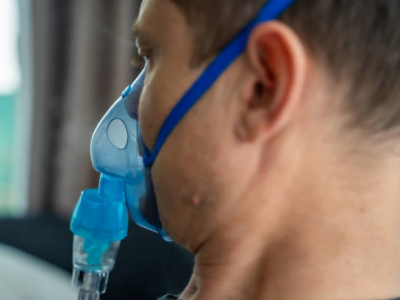WHO: Northern Hemisphere flu activity starting to rise
Flu activity in the Northern Hemisphere is starting to rise, though levels are still low, as flu returned to inter-seasonal levels in temperate parts of the Southern Hemisphere, the World Health Organization (WHO) said in its latest global flu update.
In North America, Canada is reporting an earlier than usual start to its flu season, though in the United States, flu markers are still below baselines, with slight increases reported. In both countries, 2009 H1N1 is the most commonly detected strain.
In Central America, flu activity increases were reported by Costa Rica, El Salvador, and Nicaragua.
Flu in European and Central Asian countries is also starting to slowly increase, with 2009 H1N1 and H3N2 strains co-circulating. In western Asia, increased flu activity has mainly been reported on the Arabian peninsula, including Bahrain, the occupied Palestinian Territory, Oman, and Qatar, while 2009 H1N1 levels remain elevated in Saudi Arabia.
Farther east, flu levels reached baseline in South Korea, and disease levels in Laos stayed high.
Globally, of samples that tested positive for flu during the first half of November, 88.4% were influenza A and 11.6% were influenza B. Of the subtyped influenza A strains, 85% were 2009 H1N1 and 15% were H3N2.
Nov 26 WHO global flu update
FDA identifies Central Coast counties as potential E coli romaine sources
The Food and Drug Administration (FDA) yesterday further fine-tuned the suspected source of Escherichia coli O157:H7 in romaine lettuce from the California's Central Coast by naming six specific counties, based on preliminary results from the traceback investigation.
Counties include Monterey, San Benito, San Luis Obispo, Santa Barbara, Santa Cruz, and Ventura, the FDA said, noting that more counties may be added based on new findings.
Consumers no longer need to avoid romaine that was harvested outside the Central Coast growing region. For example, it said romaine grown near Yuma, Ariz., Imperial and Riverside counties of California, Florida, and Mexico don't appear to be part of the outbreak, which has sickened 65 people in the United States and Canada. Hydroponically and greenhouse-grown romaine is also not related to the outbreak.
On Twitter yesterday, FDA Commissioner Scott Gottlieb, MD, said the FDA has had "boots on the ground" since last week collecting environmental, soil, and water samples for lab testing to see if E coli is present. "Should positive samples be identified, we will update the public promptly," he said.
Nov 28 FDA update
Scott Gottlieb Twitter thread
In related developments, many companies in the romaine supply chain started shipping again on Nov 26, a week after all items were pulled from the market due to the E coli outbreak, Food Safety News (FSN) reported today.
Romaine growers and distributors have met with the FDA and have agreed on adding product labels with the harvest date and growing location to assure consumers that romaine coming back into the market is not linked to the current outbreak.
Teressa Lopez, with the Arizona Leafy Greens Marketing Agreement, told FSN that many distributors began shipping on Nov 26 as soon as word came from the FDA, because they had their labels ready.
Nov 29 FSN story
Imported tahini linked to Salmonella cases in 3 states
The US Centers for Disease Control and Prevention (CDC) said yesterday that tahini imported from Israel has been connected to five Salmonella Concord infections in three states. On the same day, Achdut Ltd., based in Ariel, Israel, said it is recalling all packages and sizes of its tahini products that were produced between Apr 7 and May 21 of 2018, because they may be contaminated with Salmonella.
Sick patients were reported from New York (3), Hawaii (1), and Michigan (1). None were hospitalized, and no deaths have been reported. Illness onset dates range from Jun 16 to Oct 18. All five people who were interviewed said they ate tahini or hummus made with tahini; three of them consumed the products in Hawaii and New York. The other two patients consumed the food during travel to other countries.
Tests by the FDA identified Salmonella Concord in a tahini sample collected at the point of import, specifically Baron's brand. The recall covers the all of the company's tahini brand names: Achdut, Baron's, S&F, Pepperwood, Soom, and Achva.
The company said the source of the outbreak is cross-contamination and that it has eliminated the source and taken preventive steps.
Nov 28 CDC outbreak announcement
Nov 28 FDA recall notice










